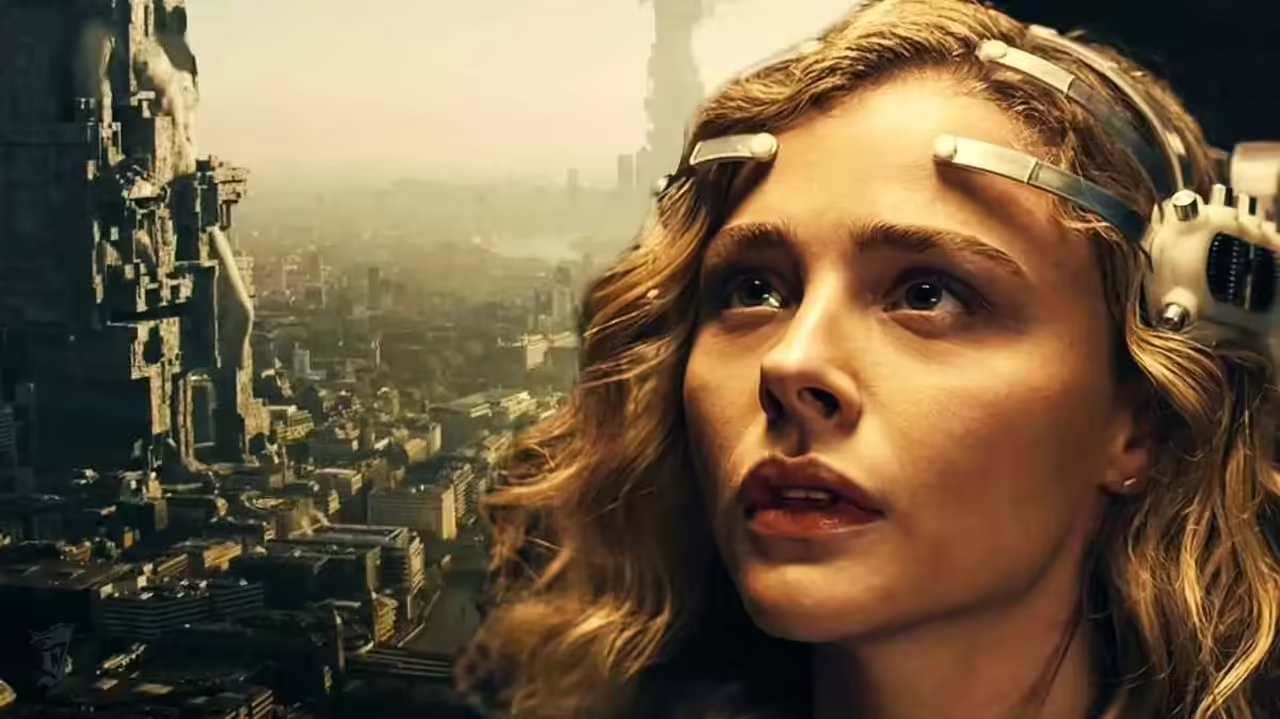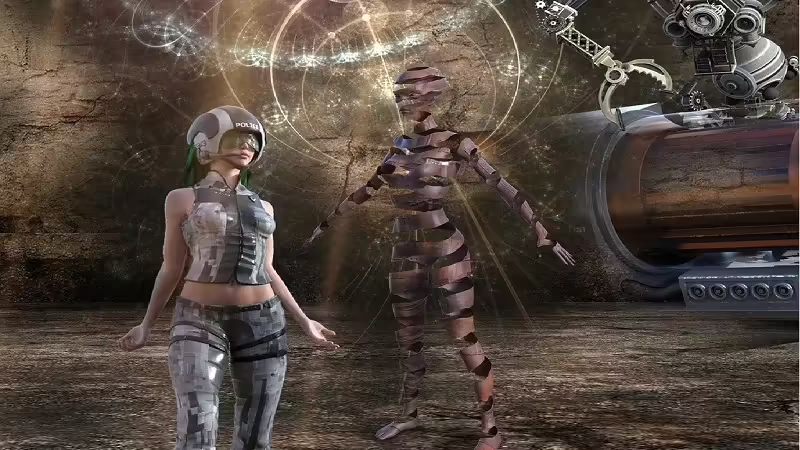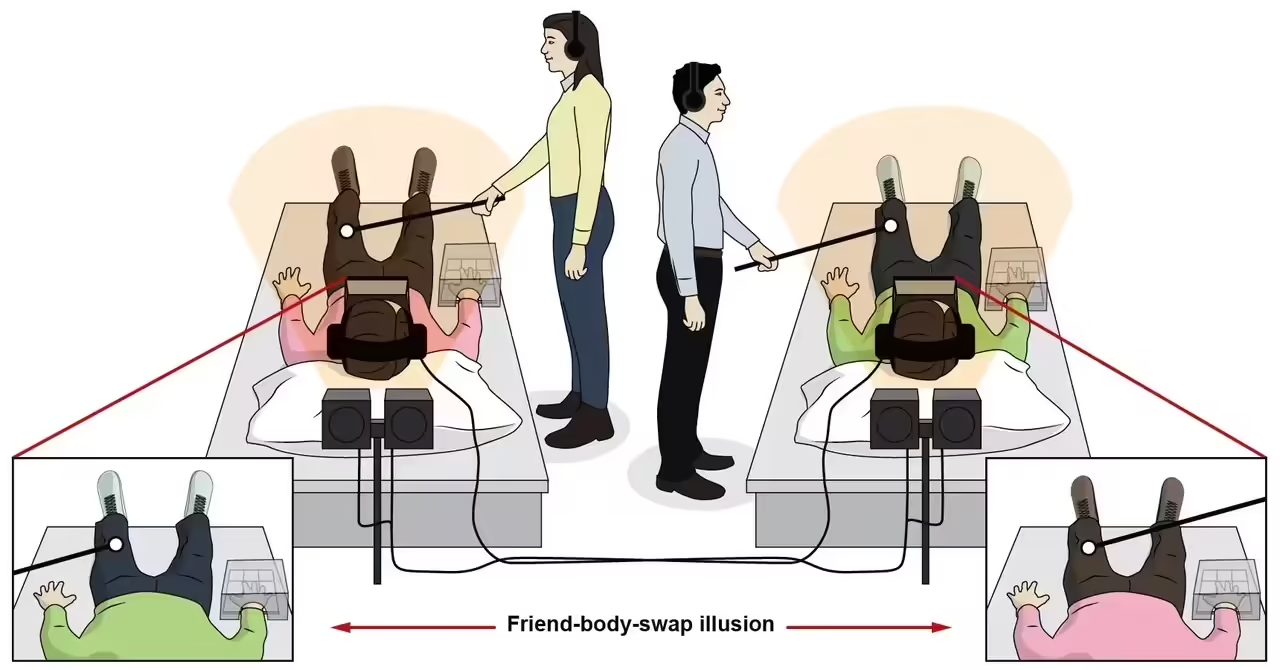
The science fiction genre has presented us with a wide range of futuristic visions, some utopian and some dystopian. In the case of “The Peripheral”, a series based on the novel by renowned author William Gibson, we are transported to a dystopian world that makes us reflect on the possible paths that technology could take in the future. With an intriguing narrative and complex characters, the series immerses us in a plausible and terrifying future.
“The Peripheral” is set in two different but connected timelines. In a decadent near-future known as “Jackpot,” society faces serious problems, including resource scarcity, climate change and extreme inequality. This storyline follows Flynne Fisher, a young woman living in a rural community who becomes embroiled in a conspiracy after witnessing a murder through virtual reality technology.
The other timeline is set in the 22nd century, in a reality called “Hebbian,” where a technological elite controls the world through advances in artificial intelligence and virtual reality. Here we meet Wilf Netherton, a political advisor who becomes embroiled in a mystery related to Flynne and discovers the existence of a device called “The Peripheral” that allows communication between the two timelines.
What makes “The Peripheral” such a fascinating series is its exploration of the social, political and ethical implications of technology. Gibson presents a bleak vision of a future dominated by powerful corporations and a growing gap between the rich and the poor. The series examines themes such as the abuse of power, mass surveillance and human alienation in an increasingly connected world.
In addition, “The Peripheral” invites us to reflect on the nature of identity and reality in an environment where technology can create and alter the perception of truth. Virtual reality plays a central role in the series, showing us how people can live false experiences and how that can affect their sense of reality. The line between the real and the simulated is blurred, raising intriguing questions about the nature of human existence.
Another highlight of the series is the construction of the characters. Both Flynne and Wilf are complex and realistic characters who guide us through this dystopian world. Flynne is a brave and intelligent young woman who finds herself in a vulnerable position but fights for truth and justice. Wilf, on the other hand, is a sophisticated but cynical man who discovers his own connection to the future and must face the consequences of his actions.
In terms of production, “The Peripheral” offers an impressive visual aesthetic that perfectly reflects the dystopian atmosphere of the story. The dark and desolate settings, combined with the futuristic technology, create a unique and evocative ambiance. The art direction and visual effects help to immerse the viewer in this dystopian world, while the carefully crafted cinematography highlights the tension and suspense in every scene.
In addition, the series’ script is solid and full of unexpected twists and turns that keep the audience hooked throughout. The narrative unfolds in a non-linear fashion, jumping between the two timelines and gradually revealing the connections between them. This creates a sense of constant intrigue and allows the viewer to piece together the puzzle along with the characters.
Importantly, “The Peripheral” not only focuses on technology and intriguing plot, but also addresses relevant social and political issues. Through its dystopian vision, the series raises questions about the power of corporations, the influence of technology on society and the risks of a growing gap between social strata. These provocative themes invite us to reflect on our own present and where we are headed as a society.
Dive into the dark future of “The Peripheral”: A journey into the plot and characters of the series
The story takes place in two interconnected timelines. In the near future, known as “Jackpot,” society faces a series of crises, including resource scarcity, climate change and extreme inequality. This is where we meet Flynne Fisher, a young inhabitant of a rural community who becomes embroiled in a conspiracy after witnessing a murder through virtual reality technology.
In contrast, in the 22nd century, in a reality called “Hebbian”, we meet Wilf Netherton, a cynical political advisor who discovers a connection to Flynne’s future and becomes embroiled in a mystery involving an advanced technology called “The Peripheral”. This technology allows communication and interaction between the two timelines, creating a link between events occurring in both realities.
Flynne Fisher is a brave and determined protagonist. Although she initially becomes embroiled in a conspiracy beyond her comprehension, she demonstrates a keen intelligence and tireless determination to uncover the truth. As she delves deeper into this dark future, she becomes a key player in the fight against the powerful forces that threaten both her reality and that of “Hebbian.”
Wilf Netherton, on the other hand, is a complex and ambiguous character. As a political advisor in “Hebbian,” he is immersed in a world where technology and politics are intertwined in dangerous ways. As he delves deeper into the mystery surrounding Flynne and “The Peripheral,” he faces his own demons and must deal with the consequences of his past actions.
The series explores themes of abuse of power, mass surveillance, manipulation of reality and dehumanization in a hyper-connected world. Through an intriguing and complex narrative, “The Peripheral” forces us to reflect on the social and ethical implications of technology in our own society today.
The visual setting of the series reinforces the dystopian atmosphere, combining futuristic elements with a dark and oppressive tone. The art direction and visual effects manage to create a unique aesthetic that immerses the viewer in this disturbing and fascinating world.
From the page to the screen: The success of “The Peripheral” as a television series
Adapting a novel to television format is always a challenge, but in the case of “The Peripheral,” the series manages to capture the essence and dystopian vision of William Gibson’s original work in an impressive way. The success of the series lies in several key aspects that have contributed to its popularity and acclaim.
First, the creative team behind the series has been able to maintain the essence and complexity of the novel’s plot. The adaptation was done with great care and respect for the source material, which allowed the series to maintain the intriguing atmosphere and complex narrative that characterize Gibson’s work. The screenwriters have managed to balance the elements of science fiction, suspense and drama, creating a captivating rhythm that keeps the viewer hooked in each episode.
The cast has been another key factor in the success of “The Peripheral”. Strong and convincing performances have brought the characters to life and given them an emotional depth that connects with the audience. Both the lead and supporting actors have managed to convey the complexities and internal conflicts of their respective roles, which has contributed to the overall quality of the series.
The visual production of “The Peripheral” also deserves recognition. The series features impressive art direction that faithfully recreates Gibson’s dystopian, futuristic vision. The special effects and visuals are well executed, helping to build the world and immerse the viewer in the story. The bleak and dark aesthetic, combined with futuristic touches, helps to create a unique and captivating atmosphere.
The success of “The Peripheral” as a television series is also due to its thematic relevance in today’s context. The series raises ethical issues and dilemmas related to technology, inequality and abuse of power, themes that resonate in our contemporary society. The series’ ability to generate reflections on the future and the implications of technology in our lives has contributed to its positive reception by audiences and critics alike.
Unraveling the mysteries of “The Peripheral”: Analysis of the narrative and key elements
“The Peripheral” is a series characterized by its complex and mystery-filled narrative, which keeps the viewer constantly intrigued and eager to discover the secrets hidden in its plot. Below, we will explore some of the key narrative elements that contribute to the series’ fascination.
Duality of timelines: One of the most distinctive features of “The Peripheral” is the existence of two interconnected timelines: the near future of “Jackpot” and the 22nd century of “Hebbian”. This duality provides a fascinating narrative structure, as the series jumps from one timeline to the other, gradually revealing the connections between the two and keeping the viewer in suspense about how events and characters in both realities are related.
Technology and virtual reality: The series presents a futuristic vision of technology, in which virtual reality plays a crucial role. Through advanced virtual reality devices, characters can experience and communicate with other timelines, creating an environment in which identity and perception of reality become blurred. This exploration of technology and its impact on society raises questions about the nature of human existence and the ethical implications of its use.
Conspiracies and Secrets: “The Peripheral” is steeped in conspiracies and secrets that the characters must unravel. From the murder witnessed by Flynne to the mystery surrounding “The Peripheral” and its connection to the future, the series skillfully plays with intrigue and suspense. Unexpected twists and surprising revelations keep viewers immersed in the plot and entice them to keep searching for answers.
Social and Political Criticism: Through its dystopian world, “The Peripheral” also addresses relevant social and political issues. The series criticizes economic inequality, corporate influence and political manipulation. It examines how power and technology can be used to oppress and control the masses, raising incisive questions about our own reality and where we are headed as a society.
Complex characters: The characters in “The Peripheral” are intricate and layered. From Flynne, a spunky young woman at the center of a conspiracy, to Wilf Netherton, a cynical and ambiguous political advisor, the characters evolve as they face challenges and discover their connection to the mysteries of the future. Their motivations and actions often have unexpected repercussions, adding depth and complexity to the narrative.







